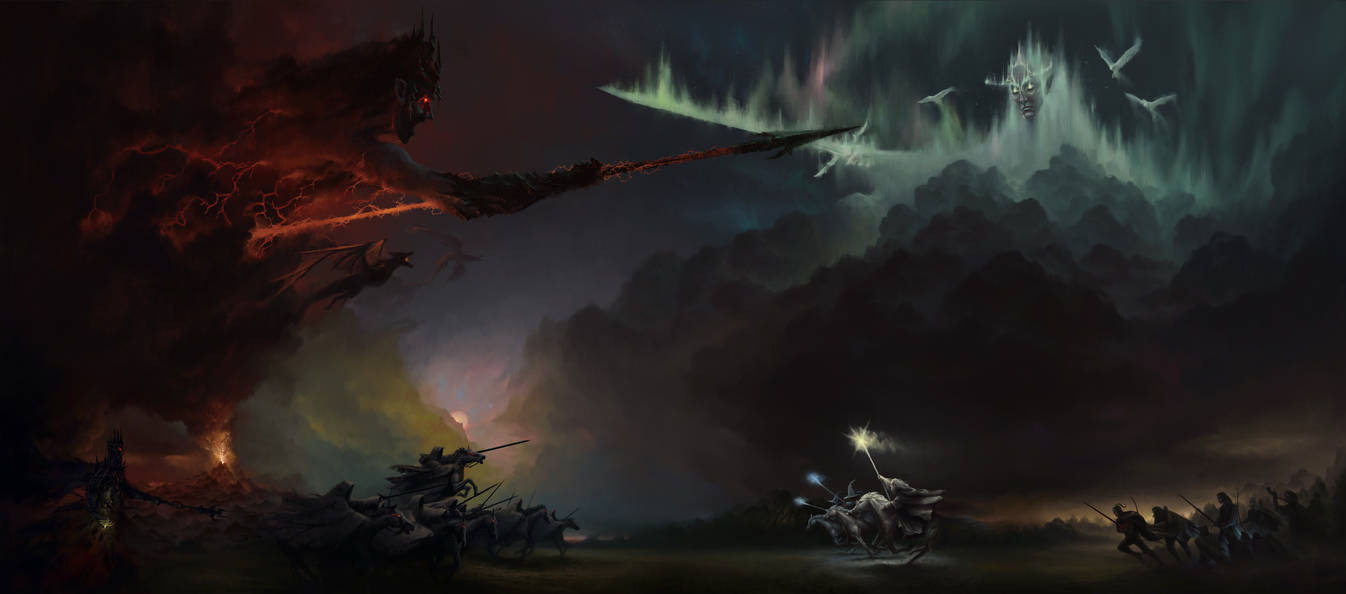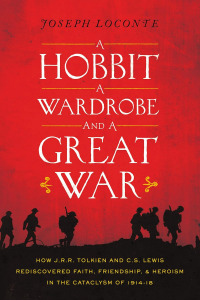Wednesday, September 13, 2023

 As part of the student fellowship program at the Center for Apologetics and Cultural Engagement, we work with our student fellows to develop book reviews about significant books that overlap their interests with those of the Center. The following review of Joseph Loconte’s A Hobbit, A Wardrobe, and a Great War is part of that ongoing initiative.
As part of the student fellowship program at the Center for Apologetics and Cultural Engagement, we work with our student fellows to develop book reviews about significant books that overlap their interests with those of the Center. The following review of Joseph Loconte’s A Hobbit, A Wardrobe, and a Great War is part of that ongoing initiative.
Can any light be found amidst the darkness of war? It kills without mercy, tears apart families, and leaves little room for virtue. When millions of soldiers lay dead in Europe following the Great War, one could hardly blame the intellectuals of the day for having a bleak outlook on humanity’s future. However, not everyone shared this perspective. A Hobbit, a Wardrobe, and a Great War by Joseph Loconte examines the works of C.S. Lewis and J. R. R. Tolkien, who fought against the tide of their peers and found virtue through their brothers in arms and the hand of God, who turned the evils of the Great War into good.
Reimagining War and Progress
Loconte begins the book by laying out some of the philosophical and cultural leanings of the West leading up to the Great War. Drawing from the idea of the “myth of progress,” exemplified in works such as The Great Illusion by Normal Angell, Loconte traces what led the West to believe that society was climbing upward to social perfection. This myth pervaded everything from literature to science and even the church but failed to prepare the West for the horrors of the Great War. As the bloody conflict progressed, many people saw their nation’s role in the war as righteous. They believed in the nobility of defending the idea that civilized humanity would no longer engage in extreme violence and cruelty but elevate itself to near utopia.
Against the cultural current of the myth of progress, J. R. R. Tolkien and C. S. Lewis used literature and fantasy to reshape the post-war narrative towards hope rather than despair. During the war, Tolkien and Lewis experienced vastly different struggles on the battlefield. Already a devout Roman Catholic, Tolkien focused on the bravery he witnessed among his peers in combat. Lewis, then an atheist, adopted a more bitter, defeated outlook, cursing a God he did not believe existed. However, when Lewis converted to Christianity at Oxford after the war, he and his new friend, Tolkien, began to write their theistic perspectives on the war into their respective literary works—notably The Chronicles of Narnia and The Lord of the Rings—by creating fantasy worlds where the heroes overcome fear and emerge victorious over evil. Tolkien and Lewis’s works helped to renew optimism for the future following the war.
Reimagining War and Heroism
A theme of the Great War that made its way into the works of Tolkien and Lewis following the conflict was that of heroism. This theme was exemplified in the ordinary, simple characters in their books who overcame adversity despite their fears to ensure peace abounded in their lands. Both authors saw the bravery of the men around them who fought honorably for their countries and fellow soldiers, even in the face of horrific violence.
Tolkien’s emphasis on heroism is best observed in the humblest creatures he created: the hobbits. “The character of the hobbit was a reflection of the ordinary soldier, steadfast in his duties while suffering in that dreary ‘hole in the ground,’ the front-line trench” (75). Tolkien’s image of a small hobbit trudging up to Mount Doom to destroy the ring that might bind them all in darkness mirrored the life of an average soldier who, though overlooked in the vast number of war casualties, put their life on the line to stop evil forces.
The conflicts in The Lion, the Witch, and the Wardrobe demonstrate Lewis’s understanding of war as a “heroic quest” (170). Like his fellow soldiers, Lewis’s noble characters defended what they knew to be righteous and good. Tolkien and Lewis’s literary portrayals of heroism fly in the face of other post-war thinkers who sought to condemn every result of the Great War. For these authors, honor and chivalry were destined to prevail.
Reimagining War and Friendship
Tolkien’s and Lewis’s novels also reflect the value of their rich friendships. Tolkien’s friends from the Tea Club and Barrovian Society at King Edward’s School kept in contact by sending letters to one another amidst the horrors of the trenches. Moreover, Loconte highlights the name of The Fellowship of the Ring: “Before it is complete—and after facing many terrors and setbacks—[the characters] are transformed into a fellowship of the noblest kind” (177). Lewis experienced similar friendships among the Inklings at Oxford; their loyalty would become a model for his characters in The Chronicles of Narnia. Tolkien’s and Lewis’s friendships, enhanced by their shared wartime experiences and love of literature, bled into their work, showing the spirit of camaraderie they witnessed during the Great War.
In closing, Loconte highlights the apologetic elements of Tolkien’s and Lewis’s novels. Their fantasy series feature kingly figures who offer hope for the ultimate triumph of good over evil. For Tolkien, Aragorn exemplifies many of the same traits Tolkien saw in the best of those in the Great War, and he offers hope for the future of Middle-Earth. For Lewis, Aslan is an unmistakable Christ figure. Aslan’s combination of strength and gentleness gives readers a glimpse into the beauty of the Christian faith in the aftermath of the war. Ultimately, Tolkien and Lewis offer more hopeful themes than their contemporaries following the war and subtly point their readers to the reason for their hope: Christ.
Conclusion
A Hobbit, a Wardrobe, and a Great War conveys piercing insights about Tolkien and Lewis’s novels for new readers and avid fans alike. For those who cherish their stories, Loconte enhances the experience by revealing how the authors translated their war experiences into their writing. At the same time, for newcomers, Loconte shows how the authors shone a bright light amidst the darkness of wartime by creating narrative masterpieces that influenced generations.
For those facing times of despair or suffering, A Hobbit, A Wardrobe, and a Great War offers encouragement that anyone—even ordinary, hard-working people—can overcome difficulty and persevere. “Weeping may tarry for the night, but joy comes with the morning” (Psalm 30:5). J. R. R. Tolkien’s and C. S. Lewis’s responses to the Great War teach that there is an apologetic for suffering. The answer to adversity weaved throughout their stories will ring true for all eternity: Christ is Lord.
Joseph A. Dennis is a student worker for the Center for Apologetics and Cultural Engagement and a senior at Liberty University. He will soon finish his B.A. in Theology and Apologetics with a minor in biblical languages. His academic interests lie primarily in the field of contemporary theology and he is passionate about empowering the church in the practical application of apologetics. He hopes to continue his education at the graduate and doctoral levels and seek a profession in theological education. He enjoys camping, hunting, and showing people pictures of his chocolate lab and golden retriever.